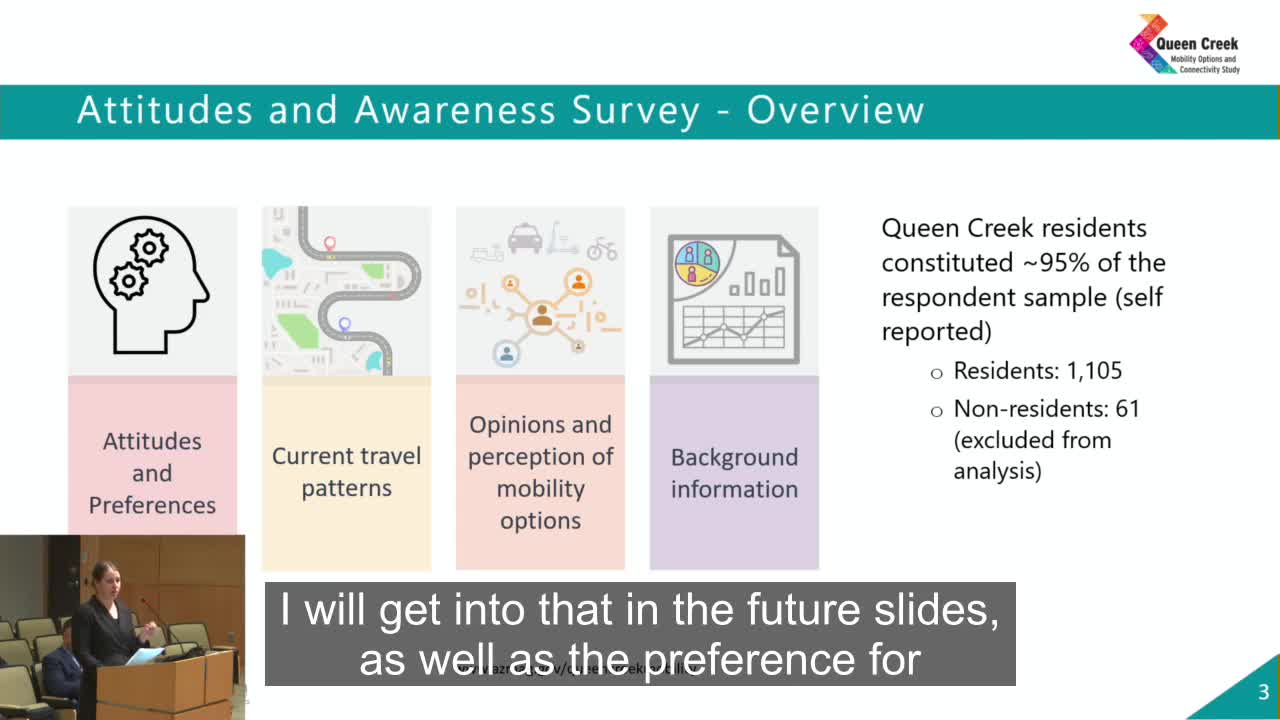Study team proposes new mobility options for town including TNC partnerships and microtransit
May 08, 2025 | Queen Creek, Maricopa County, Arizona
This article was created by AI summarizing key points discussed. AI makes mistakes, so for full details and context, please refer to the video of the full meeting. Please report any errors so we can fix them. Report an error »

In a recent Queen Creek Town Council meeting, officials discussed a comprehensive plan to enhance local mobility options, aiming to alleviate congestion and improve connectivity for residents. The plan, shaped by a recent survey and input from a technical advisory group, outlines both near-term and long-term strategies to address transportation needs in the community.
Key among the proposed near-term solutions is a partnership with transportation network companies (TNCs) like Uber and Lyft. This initiative would provide subsidized rides for residents, making transportation more accessible, especially for those without personal vehicles. The proposed fare structure includes a $2 base fare, with the town covering up to $10 per ride, ensuring affordability while maintaining fiscal sustainability.
Another significant proposal is the introduction of microtransit services, which would operate similarly to existing programs in other parts of the Valley. This on-demand service would allow residents to request rides via a mobile app, connecting them to key activity centers throughout the town. A pilot program could be launched at an estimated cost of $230,000 annually, focusing initially on weekend service.
The council also discussed promoting micromobility options, such as bicycles and e-scooters. An education campaign would support safe usage and parking, while the town considers infrastructure improvements to accommodate these devices. This initiative aligns with the recently adopted ordinance that regulates micromobility device operation within town limits.
Additionally, the concept of mobility hubs was introduced, which would serve as centralized locations for various transportation services, enhancing the overall efficiency of the town's mobility strategy. These hubs could evolve to include amenities like digital signage and seating as usage increases.
While these initiatives promise to improve transportation options for Queen Creek residents, the council emphasized that implementing these plans will require a commitment of local funds. The discussions reflect a proactive approach to addressing community mobility needs, with the potential to significantly enhance daily life for residents in the coming years.
Key among the proposed near-term solutions is a partnership with transportation network companies (TNCs) like Uber and Lyft. This initiative would provide subsidized rides for residents, making transportation more accessible, especially for those without personal vehicles. The proposed fare structure includes a $2 base fare, with the town covering up to $10 per ride, ensuring affordability while maintaining fiscal sustainability.
Another significant proposal is the introduction of microtransit services, which would operate similarly to existing programs in other parts of the Valley. This on-demand service would allow residents to request rides via a mobile app, connecting them to key activity centers throughout the town. A pilot program could be launched at an estimated cost of $230,000 annually, focusing initially on weekend service.
The council also discussed promoting micromobility options, such as bicycles and e-scooters. An education campaign would support safe usage and parking, while the town considers infrastructure improvements to accommodate these devices. This initiative aligns with the recently adopted ordinance that regulates micromobility device operation within town limits.
Additionally, the concept of mobility hubs was introduced, which would serve as centralized locations for various transportation services, enhancing the overall efficiency of the town's mobility strategy. These hubs could evolve to include amenities like digital signage and seating as usage increases.
While these initiatives promise to improve transportation options for Queen Creek residents, the council emphasized that implementing these plans will require a commitment of local funds. The discussions reflect a proactive approach to addressing community mobility needs, with the potential to significantly enhance daily life for residents in the coming years.
View full meeting
This article is based on a recent meeting—watch the full video and explore the complete transcript for deeper insights into the discussion.
View full meeting
